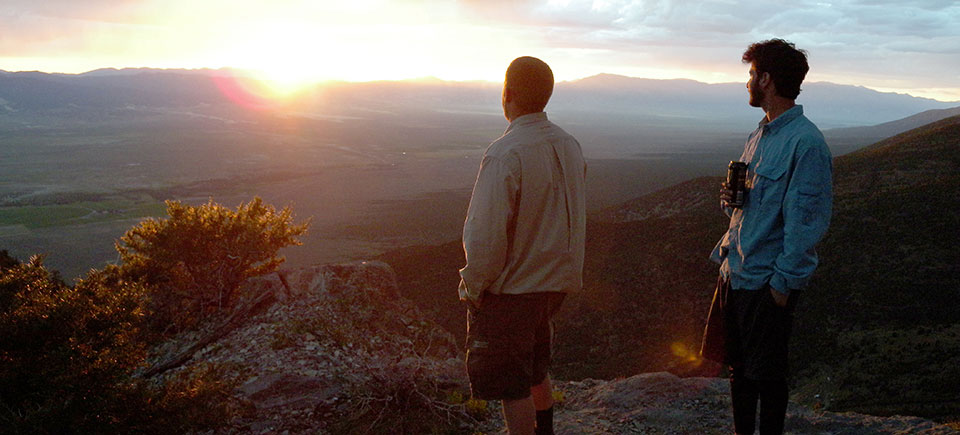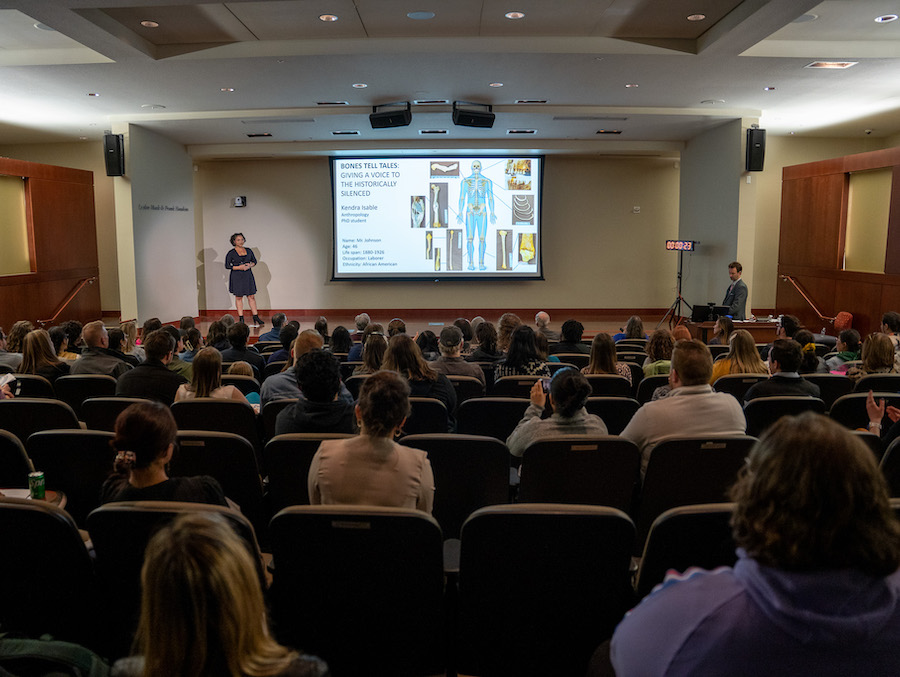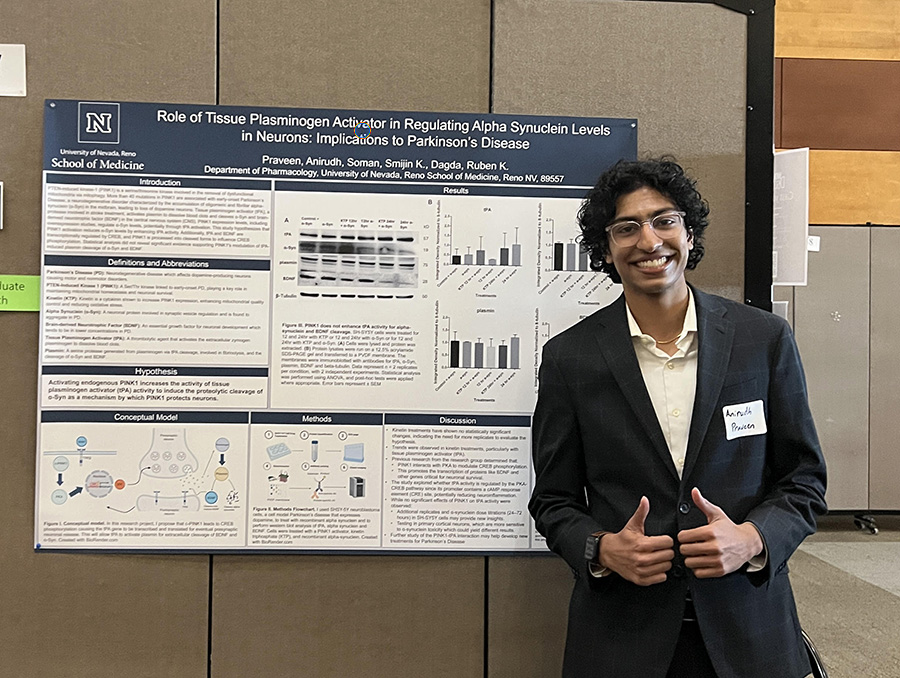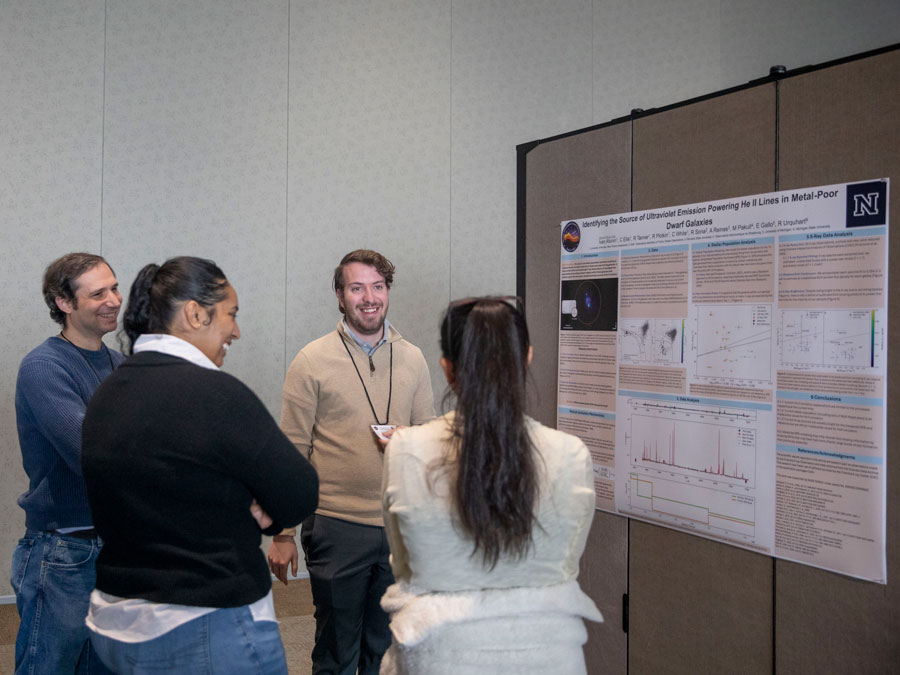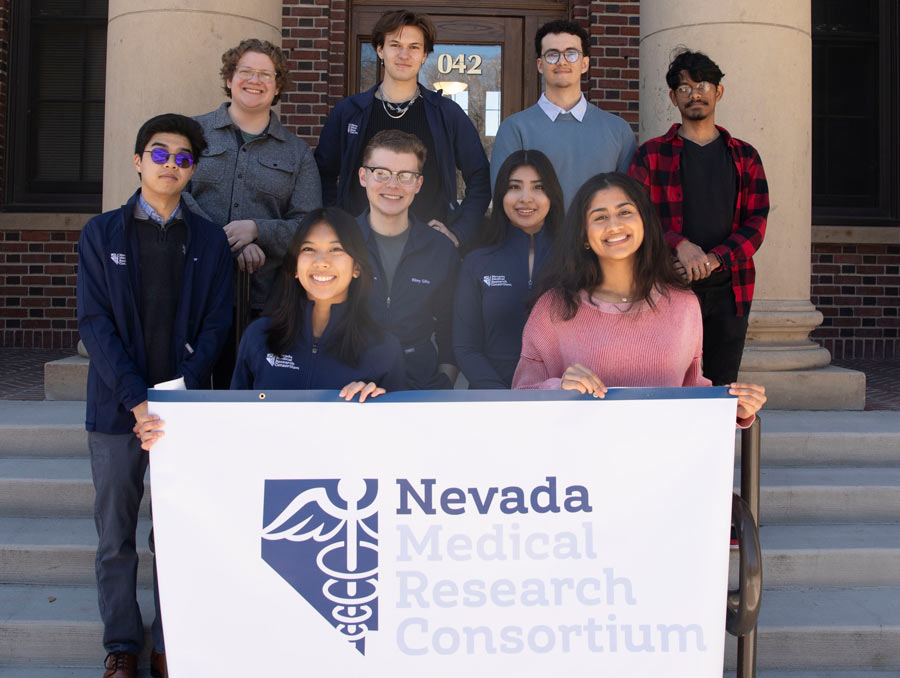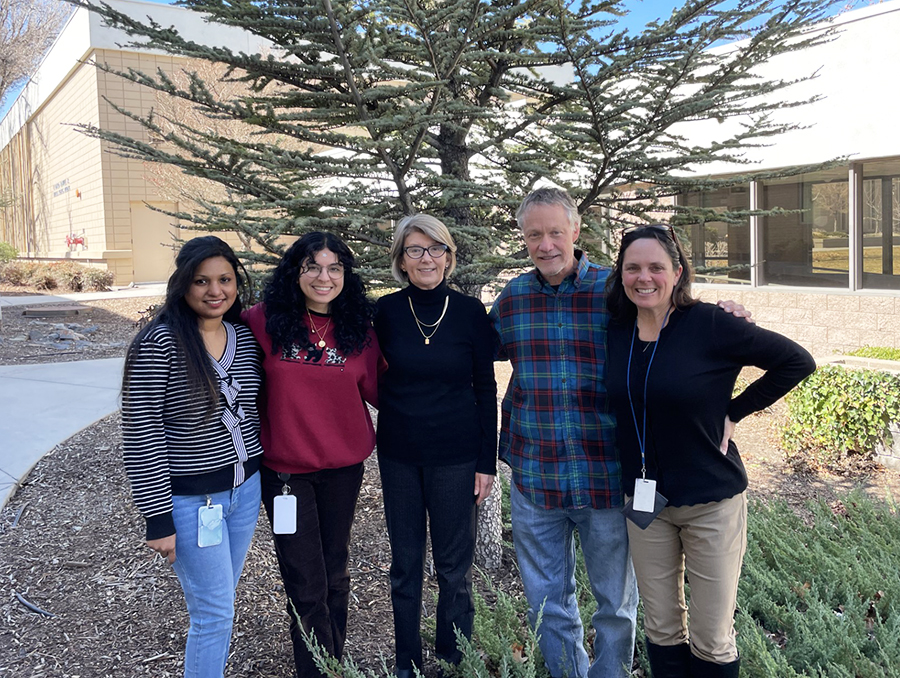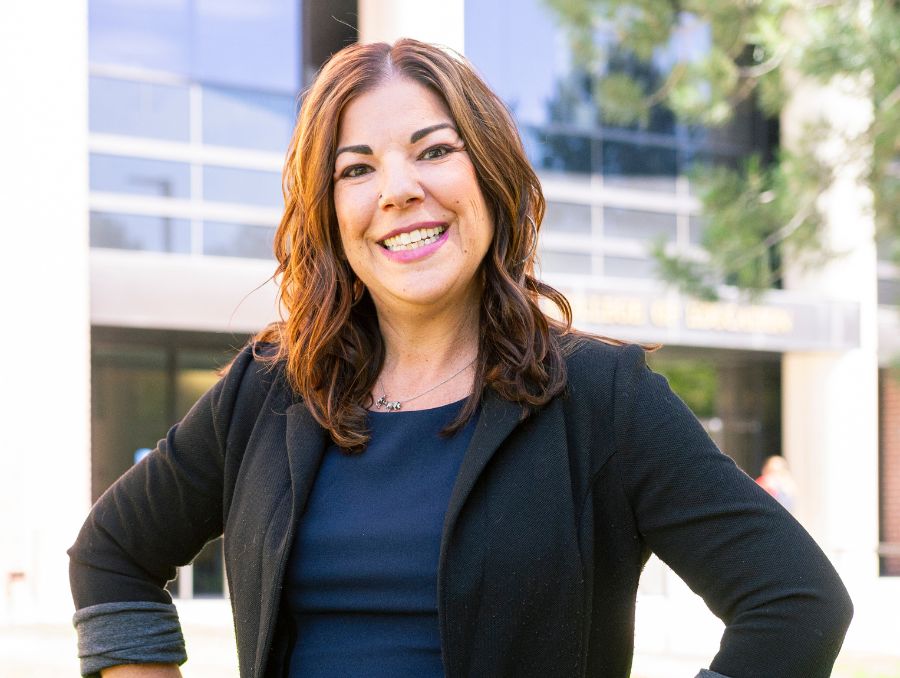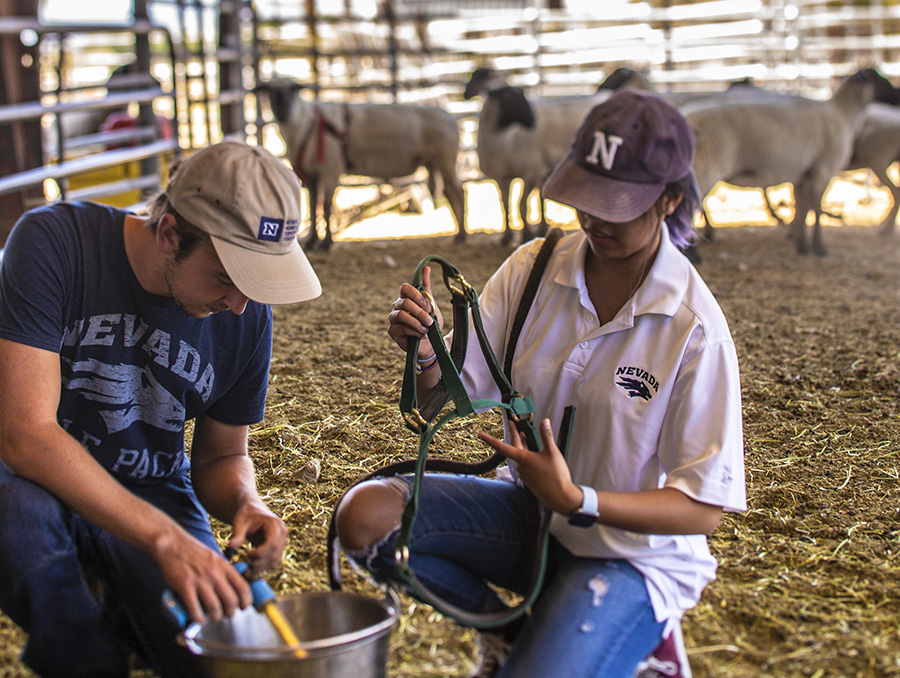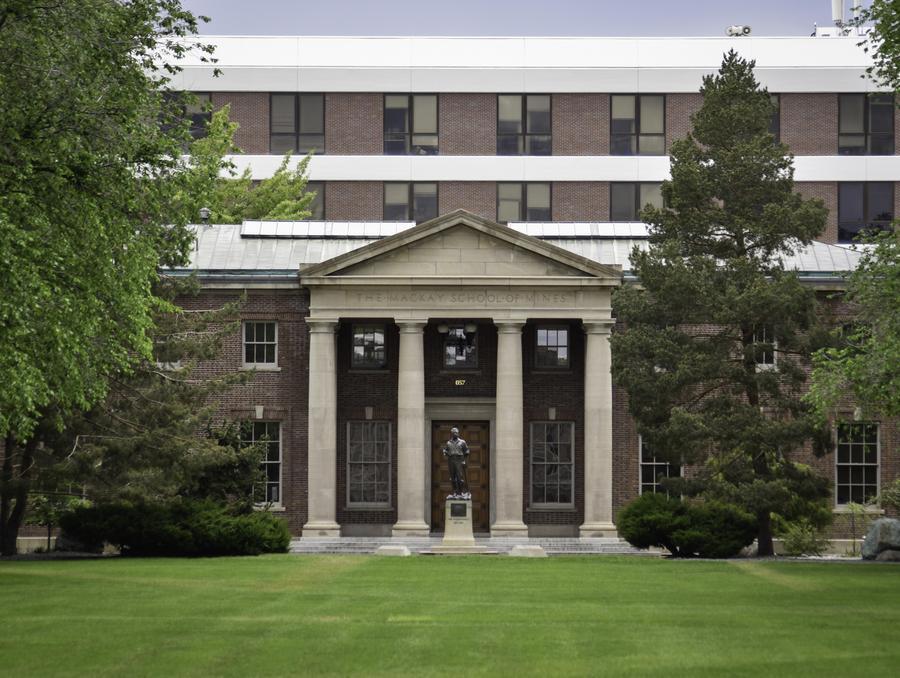A group of researchers from the Nevada System of Higher Education who have already developed the only long-term climate monitoring network specifically designed to measure variations in climate change across the Great Basin, are now working to broaden the network's reach to include the monitoring of hazards of all types in the region.
"This would be a Nevada-based environmental hazards data and information network," said Scott Mensing, a professor of geography at the University of Nevada, Reno and one of the project's principal investigators. "Anyone in the state could have access to it. It would be for all the people in Nevada."
What Mensing and his colleagues from NSHE institutions the University of Nevada, Reno, the Desert Research Institute (DRI) and the University of Nevada, Las Vegas (UNLV), envision is an information and data network that would incorporate an already robust climate monitoring network created by researchers from NSHE institutions as part of a $15 million National Science Foundation Experimental Program to Stimulate Competitive Research (EPSCoR) award to NSHE in 2008.
The researchers established 13 permanent monitoring stations to quantify the daily, seasonal and annual variability of climate that occurs from basin valleys to mountain tops of the Great Basin. Data gathered from the stations have the capability of being used to help scientists better understand the Great Basin's responses to climate change, as well as measure changes that modulate water availability, sequestration of carbon and biological diversity.
The monitoring network has been engineered to provide data for immediate use by a wide range of environmental scientists, and has been designed to be a sustainable platform for both experimental and observational research.
Thomas Piechota, interim vice president for research and dean of the graduate college at UNLV who served as one of the project's principal investigators, is pleased with the outcomes of the project so far.
"This project provides the opportunity to have long-term monitoring abilities in a region that is not well-monitored and over elevation gradients," he said. "I don't know of another place where this is done."
"One of the things that was very obvious to us at the beginning of this project was that there were individuals and small groups of people throughout the three NSHE institutions that were interested in climate research, but there was no concerted effort to develop a statewide capability to do climate change research," added Nick Lancaster, a research professor in earth and ecosystem sciences at DRI and one of the project's leads. "One of our original intentions was to create a statewide or a virtual center for climate change research.
"Over the last five years, we have developed a pretty extensive network between the researchers at our three institutions in this area. These have been, it's fair to say, extremely strong collaborations that have been formed within the framework of this project. People who are working together now probably would not have been working so closely together if this project hadn't been developed."
In an article published this week in the science journal, Eos, the NSHE team describes the design and structure of the network, summarizes some first-year data that demonstrate the potential to address compelling science and management questions, and encourages creative research collaborations among scientists and stakeholders.
"It's important, now that we've established the network, that the equipment we've used and the effort we've put forth doesn't just stop," Mensing said. "We're hoping to use the work we've done to this point as a catalyst to pull together similar, worthwhile efforts that to this point are sort of scattered out there, and not pulled together, and unify it through an institution-wide data repository."
Added Lancaster: "People have put a lot of time and money into building this network. It has great value to the state and the nation as a resource for looking at environmental processes and the effects of climate change on these processes. In many ways, the research is only just starting. The infrastructure we've planned and built over the past five years is only beginning to be used. In the coming years, the network's value to the scientific community and the broader land management and resource management communities will really start to be realized."
The NSHE team is working on creating partnerships with a number of other environmental data networks, programs and agencies throughout the region, in areas such as wildland fire, flood, droughts and earthquake monitoring.
"We need to make this effort much more proactive," Mensing said. "These are the types of environmental hazards that, once they hit you, can inflict terrible damage to a region. If we can pull all the information and data that is out there ahead of time, it will give stakeholders time to plan, before the next big event hits. Good, science-based planning data can help individuals and local governments make the proper disaster preparations ahead of time that can save these stakeholders millions of dollars.
"This is our long-term plan - to create a real-time network of data and information that would be of benefit to all Nevadans. It would be available to help anyone, at any time."
Graham Kent, Director of the Nevada Seismological Laboratory at the University, said the climate network and the seismic network have an increasingly entwined future.
"The climate network data rides in on our statewide seismic monitoring network now, bringing data back the servers," Kent said. "The climate work is a chance for us to collaborate and expand both networks. We can build the climate network, where appropriate, onto the current seismic sites. When the climate network adds additional monitoring sites we can include the seismic monitoring. It just makes sense to build out as many sites as we can to provide the best data to researchers, disaster and community planners and the public."
The effort would put Nevada at the forefront of a national effort to better understand climate change and events, such as wildfire, that are becoming more volatile due to climate change.
"That's an absolutely key part of it," Lancaster said. "Having the system established and securing support in the long-term is going to take a fair amount of work. All of the campuses involved have provided or are in the process of providing resources to keep it going in the short-term. But in the long-term, we will need to make every effort to make it part of a much larger and broader statewide network of environmental sensors."
The effort is called the "Nevada Climate-Ecohydrology Assessment Network" (NevCAN). It is the only long-term climate monitoring network of its kind. It shares features with a nationally based monitoring network known as the National Ecological Observatory Network (NEON), but differs in that NevCAN has 13 stations measuring basin valleys to mountain tops of Great Basin at a landscape scale.
NSHE researchers involved with the project have come from a multitude of academic and research backgrounds, from members of the Department of Geography at the University of Nevada, Reno, the Division of Earth and Ecosystem Sciences at DRI, and the Department of Soil and Water Science at UNLV. An educational component has included faculty in the Department of Political Science and the College of Education at the University of Nevada, Reno, as well as from the School of Environmental and Public Affairs at UNLV.
An added wrinkle is the involvement of researchers such as Sergio Dascalu, a computer science and engineering professor in the College of Engineering at the University who has helped provide the technology that has allowed data to flow through a complex statewide wireless and wired network into the Nevada Climate Change Portal.
Piechota, a professor of civil and environmental engineering whose research background is in the areas of climate change, impacts on water resources and the involvement of stakeholders in these key areas, said the level of collaboration researchers from the three institutions displayed throughout the project was remarkable. He added that during his 14 years as a faculty member at UNLV, he hasn't been part of a research effort that tapped so deeply into the strengths of all three of NSHE's research institutions.
"It's always good for three institutions to work together, since NevCAN can cover the entire state," he said. "In addition, we all bring different expertise to make something like this succeed. In my time at UNLV, this has been the most successful collaboration of NSHE faculty that I've witnessed."
Mensing said the effort has positioned the state of Nevada as a prime climate change data destination, which will strengthen the state's reputation for research and innovation.
"The information network we've built allows us or anyone in the state or out of the state to design environmental research studies that can be truly innovative," Mensing said. "It will help support ground-breaking research and help attract more research funding to our state. It's a rich data source that is available to anyone, and we are encouraging those within the scientific community to take advantage of this valuable new resource for studying climate variability and climate change impacts."
Lancaster added he and the other researchers involved "can be very proud of this effort."
"I think we've built something that's pretty unique," said Lancaster, who has been at DRI since 1991 and is considered one of the world's leading experts on sand dunes. "I don't know of anything else where the same sort of depth of collaboration between the institutions has occurred. It does seem to me that it's something that's quite remarkable in the history of these sorts of things in Nevada."
